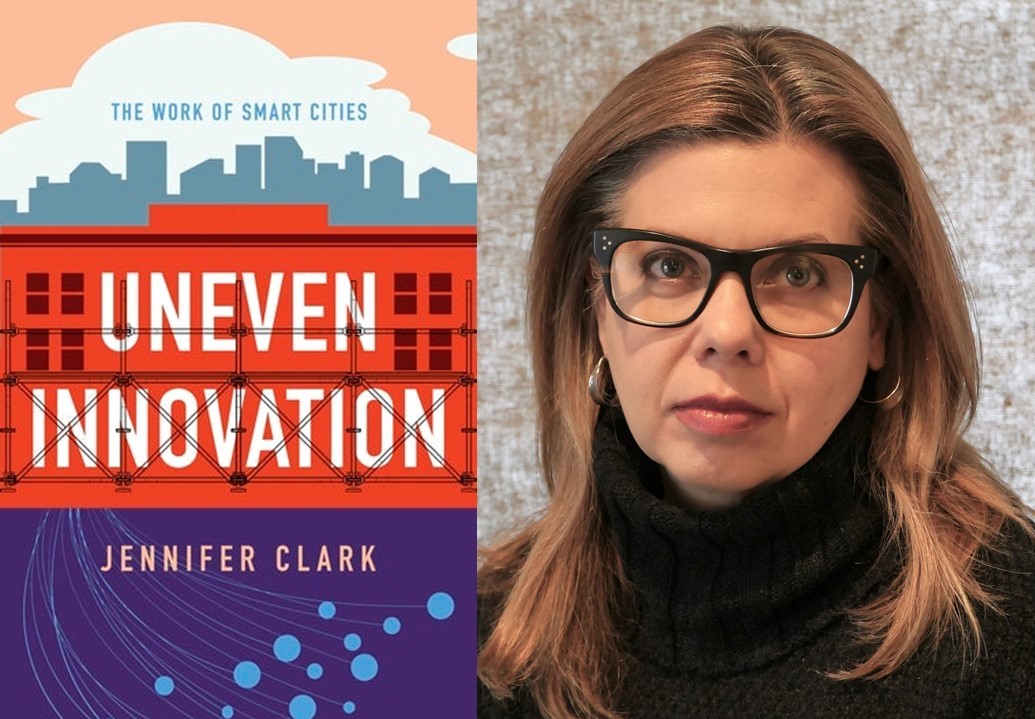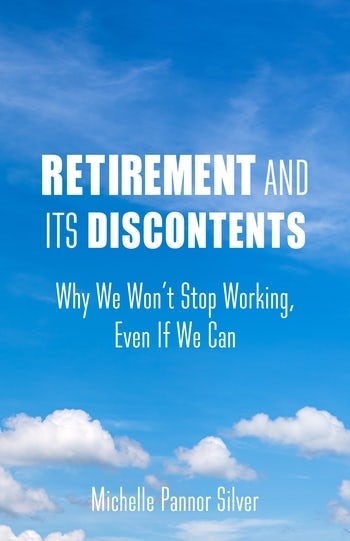Q&A: Jennifer Clark on Uneven Innovation

“Uneven Innovation problematizes the smart city project, showing us the many ways that it continues—rather than disrupts—underlying patterns of inequality, precariousness, and powerlessness. Clark’s insightful critique is not only a call for action, her work draws to light the ‘operational standards’ that all cities should be pushed to uphold when engaging the latest urban development fad. An essential read for practitioners, activists, and scholars seeking to understand and shape the role of technology on the future of cities and the urban workforce.”
~Nichola Lowe, University of North Carolina, Chapel Hill
In yesterday’s post, Jennifer Clark considered the roles of policy and technology in urban planning and the smart cities project. We continue this conversation today, with a Q&A in which Clark discusses the arguments is her new book, Uneven Innovation: The Work of Smart Cities.
If you are interested in smart cities and urban planning, make sure to enter our giveaway for a chance to win a copy of Uneven Innovation.
• • • • • •
Q: In one of the last articles marking the end of The Guardian Cities six-year project, the editors presented the case making low-tech ‘dumb’ cities instead of ‘smart’ ones, is there a good case for low-tech rather than high-tech cities?
Jennifer Clark: The assumption that all tech is good tech enabling improved outcomes is naïve at best and manipulative at worst. That said, there is also a tendency to fetishize the familiar as simpler and safer. Here is where things get complicated: different communities will want, and perhaps should have, a different array of high tech and low tech systems. There will be variation. How we determine the mechanisms by which local tailoring occurs and under what conditions has profound implications for urban planning and economic development.
Q: Your book challenges the assumption that the distributional consequences of urban innovation will be, on the whole, positive. Instead you suggest that uneven innovation is the likely outcome of the smart cities project. Why can’t smart cities be good?
JC: The question is whether we are designing smart cities for customers or for citizens.Urban innovation is, on the whole, likely good. There is a dramatic need for significant investment in urban infrastructure and a sustained upgrading of urban public systems. However, these are public systems, public spaces, public services. The addition of novel technologies does not alter the fundamental terms of a longstanding debate about the extent to which the private sector can or should be relied upon to provide services to citizens, regardless of their economic status.
Q: There is a lot of public concern about the gig economy and the future of work. In Uneven Innovation you discuss how urban innovation supports labor flexibility as a spatial as well as institutional arrangement referencing co-working and ride sharing as the examples. Explain what you mean by “the work of smart cities.”
JC: The fact that the city is a necessary platform that enables and facilitates labor flexibility is underappreciated. The city frames the gig economy by providing the systems—the connectivities from transportation to wireless technologies—required for these new forms of work to function outside the boundaries of the firm, outside the formal employment relationship. What this means is that it is time to rethink and renegotiate the allocation of the costs of provisioning that platform between the public and private sector. We have an antiquated arrangement allocating costs and benefits between cities, citizens, and employers. Cities are now in a position to renegotiate these terms for a new economy.
Q: You argue that cities have more power than they have exercised to direct and regulate technology partnerships to achieve more equitable outcomes. Can you tell us how you arrived at this conclusion.
JC: One of the amazing things about the last decade is how cities have become so central to our understanding of innovation—in both academic analyses and popular accounts. Manhattan functions as a chronological excavation of this varied and cumulative process of privatization and partnership—from Bryant Park to Chelsea Market to The Highline to Hudson Yards—driven by urban innovations in design, governance, technology, and finance. The city is a platform for wealth generation. There is much leverage in holding the underlying asset.
Q: You talk about the role of urban planners and urban planning in the smart cities project. You are also the head of an urban planning department. How has writing this book changed your perspective on urban planning?
JC: In many ways, writing this book brought me much closer to urban planning than I had been for the previous decade when much of my work focused on regional economies. I argue in the book that the smart cities project was largely launched (and continues to operate) without the input of urban planners and urban planning. That needs to change. Rethinking the boundaries and scope or urban planning and re-centering the smart cities project on the city, not just the technology, is an exciting challenge.








